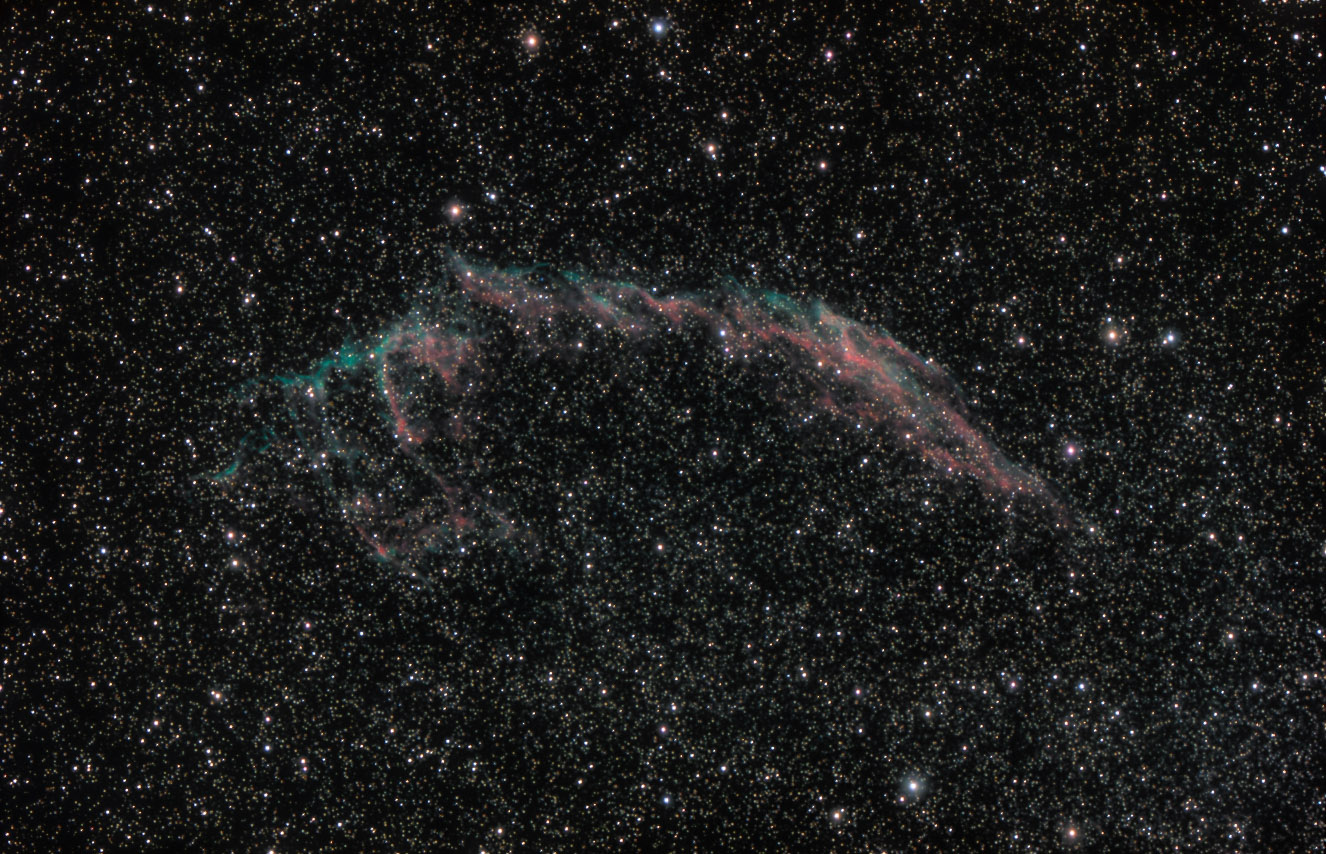The Veil Nebula is a portion of the wispy wreckage of a supernova that exploded some eight thousand years ago. Here we see the eastern portion.
The Eastern Veil Nebula (45 min total exposure Oct 27, 2021)

Around 6000 BC, not too long before the Egyptians built their first pyramid, a supergiant star some twenty times more massive than the Sun collapsed and rebounded in a spectacular supernova explosion. A glowing remnant, the Veil Nebula, has been expanding in the death-star’s wake ever since.
The Veil continues to balloon outward. Photos taken with the Hubble Space Telescope in 1997 compared with those from 2015 clearly show individual filaments on the move. The strands comprising the eastern arc of the Veil appear especially bright because we’re viewing them edge-on.
I had taken some images of the Veil last year but was not happy enough with them to share in this blog. Now that the nights have become longer, and more importantly, less hazy I decided to take some considerably longer exposure images to capture more detail. This is one such result.
 (I have never seen anyone else say so,
but the Eastern Veil Nebula conjures in my mind the impression of a salmon that has jumped out of the water and is about ready to fall back in. The background Milky Way stars comprise the river.)
(I have never seen anyone else say so,
but the Eastern Veil Nebula conjures in my mind the impression of a salmon that has jumped out of the water and is about ready to fall back in. The background Milky Way stars comprise the river.)